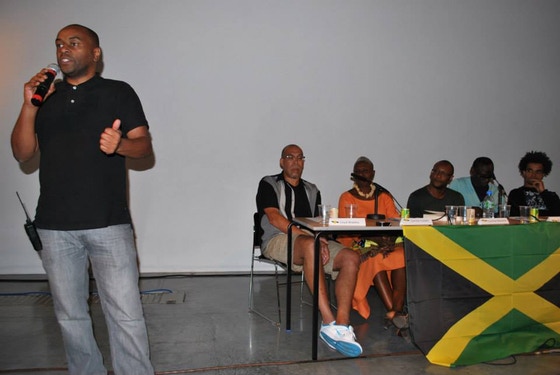Small is beautiful – Guardian interview – March 2002
https:theguardian.com/media/2002/mar/11/mondaymediasection10
As with so many clever ideas, MyVillage began as a very small one. It started as a community noticeboard for the London district of Notting Hill, built by Roifield Brown as a personal project to bolster his CV as a web designer.
Three years ago, Brown was out of a job and struggling to pay a £1,000 BT bill. He decided to seek advertising from small firms in the area. “A restaurant gave me £300,” he says. “At that point I realised you could raise revenues from local businesses.”
Armed with the knowledge that he’d found an untapped well of advertising, he teamed up with partner and investor Adam Cole. Together they formed MyVillage.com with the aim of launching a string of local sites in the mould of MyNottinghill. MyChelsea and MyKensington went live in 2000 and a further 24 were rolled out last year. The next 20, due to launch at the end of this week, will cater for cities across the UK from Plymouth to Belfast.
The template is simple. Like MSN and Yahoo!, the home page of a MyVillage site carries news stories, and links to channels ranging from entertainment guides to dating services. The difference is that all the content is specific to the URL. The news stories on MyNottinghill are not duplicated on MyTowerhamlets or MyFulham. Brown argues that this reflect the interests of the majority of internet users. “One thing the web has failed to do is reflect the way that people actually live,” he says. “OK, we may go into central London, but by and large we shop locally, eat locally and love locally.”
Hence the need for sites that provide local news, reviews of restaurants within a few square miles, dating services that can put you in touch with partners who live close by, and information on local traders.
Brown says big global hubs such as Yahoo! and Lycos failed to do this because they were created at a time when internet penetration was much lower. With comparatively small numbers of people logging on in any given area, users were segmented in terms of their interests – sex, music, cinema, computers – rather than by locale. He believes that national and international hubs are too corporate and impersonal to generate a sense of community involvement. “Nobody is ever going to get emotionally involved with Yahoo.co.uk,” he says.
MyVillage has a long way to go before it catches up with the industry giants in terms of audience. The company’s own figures suggest that the 27 London sites attract 180,000 unique visitors a month, with the figures skewed towards the more established hubs such as MyNottinghill and MyChelsea. While that pales in comparison with Yahoo!, MSN, Freeserve and the rest, MyVillage claims that its area-by-area approach is ideal for the kind of advertisers who would otherwise find the net irrelevant. These are local traders, who collectively spend £1.5bn a year advertising in the local press. Brown says MyVillage provides an effective platform for them, because it delivers a niche audience, defined by area.
MyVillage charges advertisers an annual fee of £50, plus 1.7p for every clickthrough – a model that requires a high response rate to generate any serious revenue. Dismissing banner ads as a “a pile of pooh”, Brown says the most effective way to drive business to local firms is to embed advertising links in short features. This obviously make sense in the case of bars, restaurants and galleries, where the subjects lend themselves to reviews and profiles, but Brown claims the same approach will work for traders such as builders. The idea is to personalise the subject and thus excite interest. “We have an average clickthrough rate of 6-10%. That shows the power of local advertising.”
Taking the local service to the nation may prove more problematic. With the exception of a single site catering for Birmingham, the company has focused exclusively on London postcode areas. By using the same basic template, it is now seeking an audience beyond the capital without incurring new costs by opening new offices or hiring extra staff. This makes sound commercial sense, but can a 16-strong team based in Notting Hill produce content relevant to a web user in Aberdeen or Belfast?
Brown believes the answer is yes. Behind the branding, much of the local content on MyVillage sites is provided by third parties such as the Press Association (news), Scoot and What’s On and Where. Additional material comes from freelancers in each locale and users are encouraged to contribute their own reviews and articles. “The beauty of MyVillage is that you write the content yourself.”
The willingness of community- minded users to contribute goes beyond posts on bulletin boards or the odd restaurant review. For instance, MyNottinghill recently carried a lead news story about a murder on Lukes Road. This was sourced not from the PA or local papers but from reports posted by residents on the message board. These were then picked up by news editors. Brown admits that it may be more difficult to generate original material like this through less well-established sites. “We can be more reactive in My Nottinghill because we have a history there – and we have a lot of users.”
But with no permanent presence in the 20 cities where the new services are to be launched, MyVillage may find it tough to build awareness. Brown is planning a subtle marketing campaign involving viral methods. Meanwhile, a telesales team based in Notting Hill will use Scoot’s business directory to identify advertising prospects.
Even with the launch of the new sites, MyVillage is set to break even within the next month – no mean achievement for a three-year-old dotcom. But without offices or permanent staff to back up its national expansion, it may struggle to compete with its real rivals – the local press

Related Posts
Categories
Podcasts
Engage me to work on your podcast, view my clients and endorsements here Roifield Brown podcast consultant


